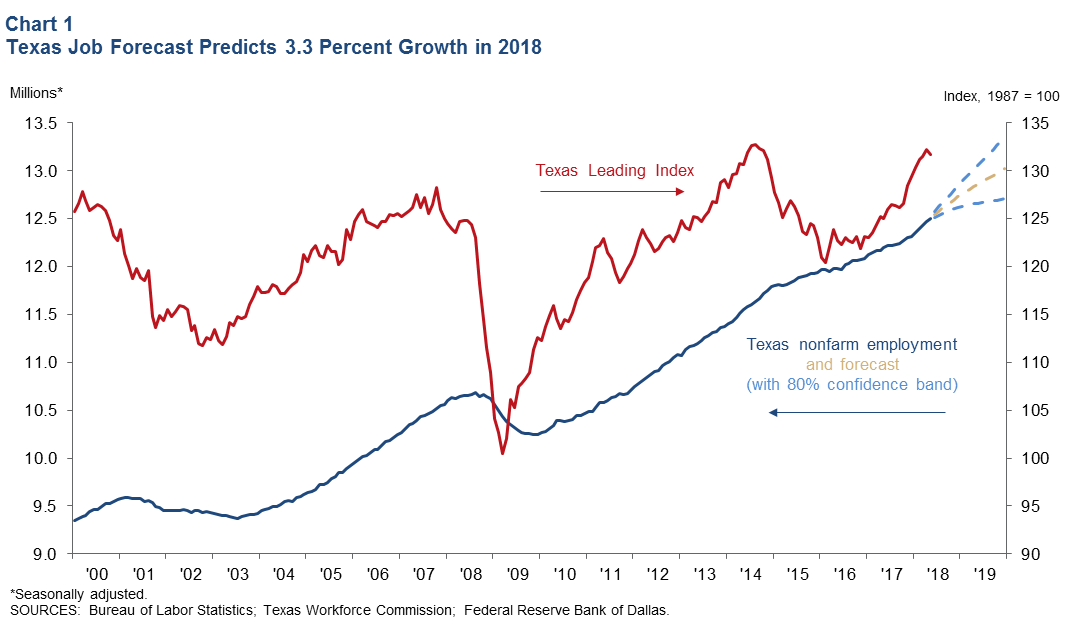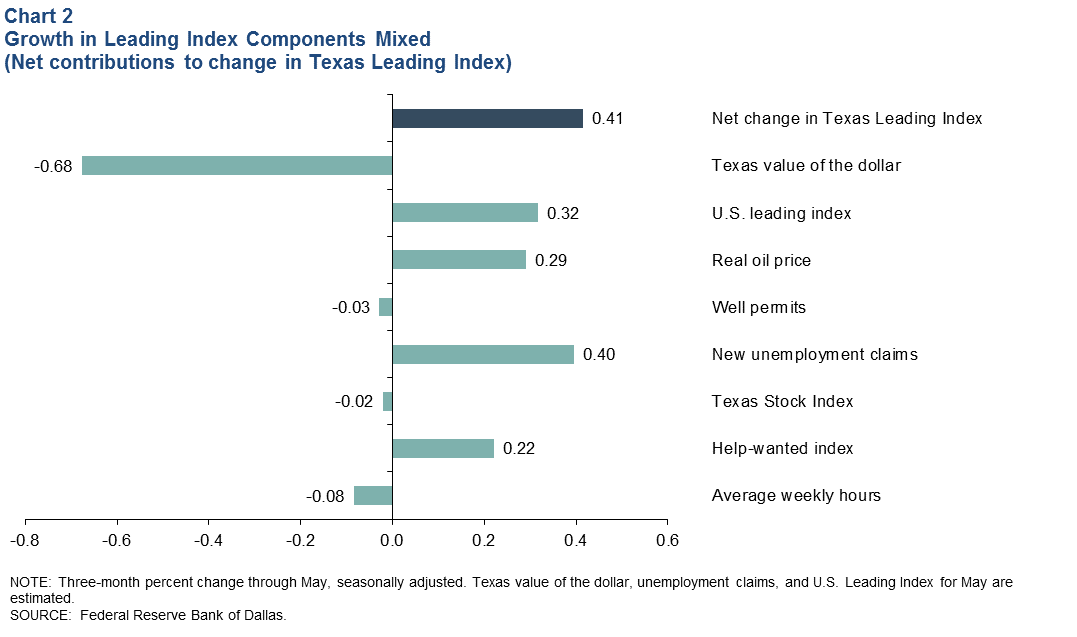Texas Employment Forecast

Incorporating May annualized employment growth of 3.2 percent and new leading index data, the Texas Employment Forecast suggests jobs will grow 3.3 percent this year (December/December), with an 80 percent confidence band of 2.4 to 4.2 percent. This is down from the previous estimate of 3.6 percent. Based on the forecast, 412,600 jobs will be added in the state this year, and employment in December 2018 will be 12.7 million (Chart 1).
The 2018 forecast is significantly above 2017 job growth of 1.9 percent, which was recently revised down from 2.1 percent due to the early benchmark revision for the fourth quarter.
“Texas job growth continued at a strong pace in May,” said Keith R. Phillips, Dallas Fed assistant vice president and senior economist. “However, growth has slipped a little over the past three months, which, along with a slowdown in the Texas Leading Index, has resulted in a slight downward revision to the 2018 forecast.
“The goods-producing sectors of energy, manufacturing and construction continue to lead overall jobs, with growth so far this year of 21.3, 4.7 and 7.3 percent respectively,” Phillips said. “The booming energy sector has led to sharp gains in drilling areas such as Midland and Odessa. Houston continues to lead the large metro areas in the state followed closely by Dallas.”
The Dallas Fed’s preliminary estimate of the Texas Leading Index increased modestly over the three months through May, rising 0.4 percent (Chart 2). Growth was mixed across components, with the Texas trade-weighted value of the dollar being a significant drag on the overall index and suggesting a slight weakening in the international demand for goods manufactured in the state. The price of oil, help-wanted advertising, new claims for unemployment insurance and the U.S. leading index all contributed positively to the index.


Next release: July 20, 2018
Methodology
The Dallas Fed Texas Employment Forecast projects job growth for the calendar year and is estimated as the 12-month change in payroll employment from December to December. The forecast reported above is a point estimate with 80 percent confidence bands; in other words, the true forecast lies within the bands on Chart 1 with 80 percent probability.
The Dallas Fed Texas Employment Forecasting Model is based on a transfer function that utilizes past changes in state employment along with past changes in the Dallas Fed Texas Leading Index (TLI). Changes in the TLI have an impact on employment with a lead time of three months, and the effect dies out slowly over time. The regression coefficients on lagged changes in employment and the TLI are highly statistically significant, and the model as a whole has been accurate relative to other forecasters over the past two decades.
The forecasting model has been in use at the Dallas Fed since the early 1990s, and the employment forecast has been published in the Western Blue Chip Economic Forecast (WBCF) since 1994. Phillips and Lopez (2009) show that the model has been the most accurate in forecasting Texas job growth relative to other forecasters in the WBCF. In particular, the model had the lowest root mean squared error and has been the closest to the actual the most times (nine of the last 17 years) out of five forecasters that have consistently participated in the survey.
For more details about the model and its performance, see “An Evaluation of Real-Time Forecasting Performance Across 10 Western U.S. States,” by Keith R. Phillips and Joaquin Lopez, Journal of Economic and Social Measurement, vol. 34, no. 2–3, December 2009.
Contact Information
For more information about the Texas Employment Forecast, contact Keith Phillips at keith.r.phillips@dal.frb.org.